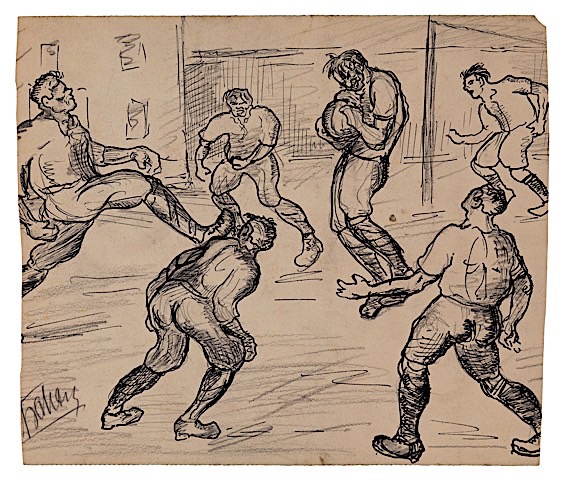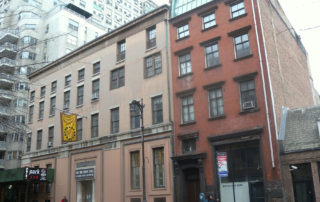Rachel Stern2023-02-06T07:18:23-05:00January 8th, 2023|Events, Lectures, Past Events|
The Kunstmuseum Basel’s department of classic modernism houses one of the most prestigious collections of its kind. It was in fact assembled at a comparatively late date. In the summer of 1939 — shortly before the outbreak of World War II — Georg Schmidt (1896–1966), the museum’s director at the time, managed to acquire twenty-one avant-garde masterpieces all at once. The works were among those denounced in 1937 by Nazi cultural policy as “degenerate” and forcibly removed from German museums. The Third Reich’s Ministry of Propaganda correctly assumed that a portion of such works would find buyers abroad and bring in foreign currency. In this way certain artworks deemed “internationally exploitable” reached the art market via various channels. [...]
Rachel Stern2023-02-01T06:15:59-05:00December 1st, 2022|Events, Lectures, Past Events|
In honor of UN Holocaust Remembrance Day, Hilary Helstein, director of the award-winning documentary "As Seen Through These Eyes" spoke with Rachel Stern, director and CEO of the Fritz Ascher Society New York, about the making of her documentary. As poet Maya Angelou narrates this powerful documentary, she reveals the story of a brave group of people who fought Hitler with the only weapons they had: charcoal, pencil stubs, shreds of paper and memories etched in their minds. These artists took their fate into their own hands to make a compelling statement about the human spirit, enduring against unimaginable odds. Featuring interviews with Simon Wiesenthal as he talks about his art, never before appearing in a film, [...]
Rachel Stern2018-12-04T12:33:53-05:00July 10th, 2017|Newsletter|
Dear Friends, Time for the outdoors! What could be timelier than an exhibition about soccer. On July 26th, the Ephraim Palais in Berlin is opening “Hauptstadtfussball,” celebrating the 125th anniversary of the Berlin soccer club Herta BSC and its local rivals. In this exhibition, you can find Fritz Ascher’s “Soccer Players” from c. 1916! It will be on view until January 8, 2018: link Since the last newsletter, Wiebke Hölzer published two essays about Fritz Ascher, one in the Biographisch-Bibliografisches Kirchenlexikon (BBKL, vol. 38, Nordhausen 2017), and one called "Kunststück" examining his “Bajazzo” from 1924 in Weltkunst No. 129 from May 2017 (pp. 120-121). And our most accomplished lawyer, the author Nicholas O'Donnell, a veteran attorney and litigation partner at the [...]
Rachel Stern2018-12-03T16:06:56-05:00June 30th, 2017|Exhibitions, Past Exhibitions|
For the first time in the United States, this exhibition presents works on paper by the German Expressionist Fritz Ascher (1893-1970). In these landscapes, made after 1945, the artist radically departed from the figural compositions he created during the Weimar years. At the same time, he built on his Expressionist visual language of vigorous brushstrokes and expressive colors. Born 1893 in Berlin, Ascher showed talent early. At the age of 16, he studied with Max Liebermann, who recommended him to the Königsberg Art Academy. Soon after, he studied with Lovis Corinth in Berlin. In contact with such artists as Emil Nolde and Edvard Munch, Ascher developed an expressionist pictorial language and created powerful figural compositions. After 1933, the Jewish-born Ascher [...]






